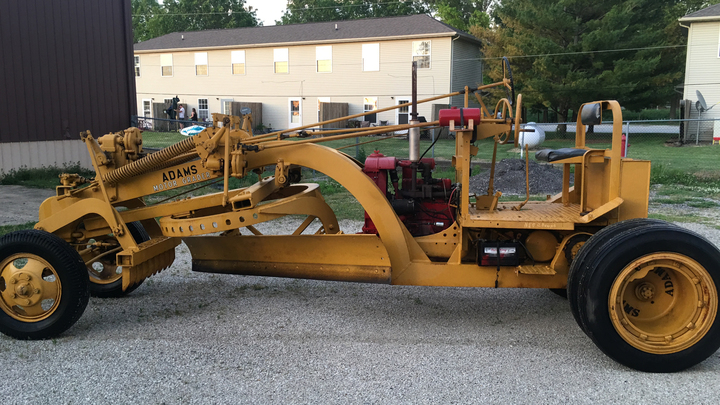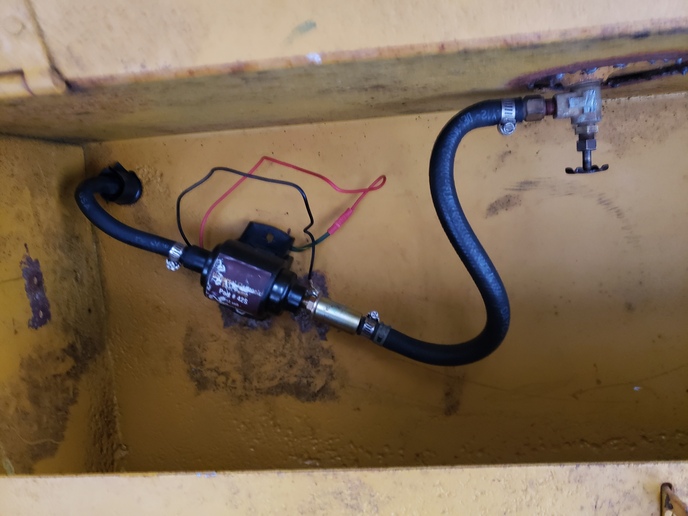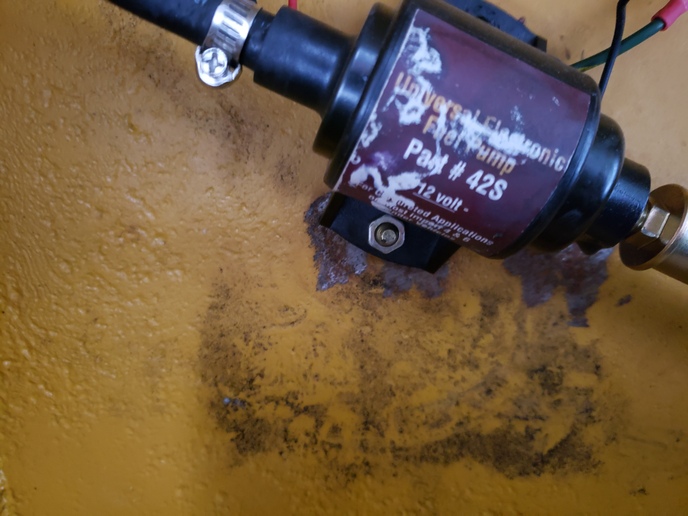I have the 1936 Adams motor grader that I purchased last year at auction. I have started this rig once in November of last year and then 3 times this spring. I only ran it minimally as I am checking fluids and making sure everything is ready to start grading. Well yesterday I started the rig and while it was warming up I checked the oil pressure and it was very low, like below 10 psi.
I stopped the engine and opened the oil full level plug on the side of the oil pan. There are two oil level plugs I believe that are about 1/2 in different elevations. When I open this upper plug, liquid came gushing out. It looked like very thin oil and smelled like gas. I then drained all the oil out and replaced with non-detergent 30W oil. Once started I had oil pressure again at about 40 PSI.
What causes gas to get into the oil? The tractor does have a electric fuel pump. If the electric pump continues to pump then I would think it would flood the carb/engine and would be difficult to start. This motor starts and runs fine every time that I have used started it and now wondering if this oil in the gas was from previous owner or only happened in the minimal times that I started it.
I am still totally new to this engine and appreciate any input that you guys can provide on what to check and look for to not let this happen again. Thoughts/ideas? Thanks!!!!
I stopped the engine and opened the oil full level plug on the side of the oil pan. There are two oil level plugs I believe that are about 1/2 in different elevations. When I open this upper plug, liquid came gushing out. It looked like very thin oil and smelled like gas. I then drained all the oil out and replaced with non-detergent 30W oil. Once started I had oil pressure again at about 40 PSI.
What causes gas to get into the oil? The tractor does have a electric fuel pump. If the electric pump continues to pump then I would think it would flood the carb/engine and would be difficult to start. This motor starts and runs fine every time that I have used started it and now wondering if this oil in the gas was from previous owner or only happened in the minimal times that I started it.
I am still totally new to this engine and appreciate any input that you guys can provide on what to check and look for to not let this happen again. Thoughts/ideas? Thanks!!!!








